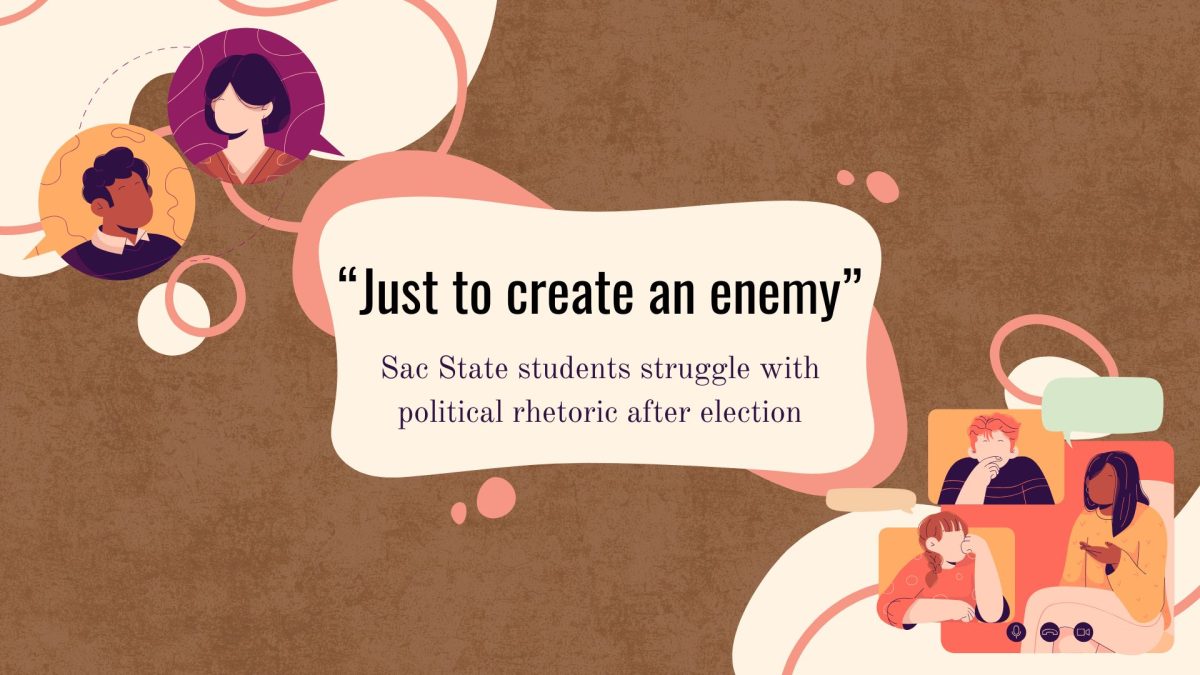CFA and CSU still locked in debate
April 3, 2001
Contract proposals ? which will eventually set the salaries and working conditions of faculty in the California State University system ? have been completed by the California Faculty Association and the California State University.
Negotiations are tentatively set to begin this month.
According to CSU chief negotiator Sam Strafaci, their proposal will be similar to the current salary contract.
The CFA proposals, according to CFA president Susan Meisenhelder, will call for sweeping changes.
The CFA and CSU are locked in a debate over many issues in the contract negotiations and CFA has publicly discussed a work stoppage if an agreement cannot be reached. One of the most controversial aspects of salaries is the Faculty Merit Increase, a percentage of salary increase based on faculty performance. It currently comprises 28 percent of the total annual raises for CSU faculty, under the current salary contract which expires July 1. Faculty workload and the hiring of more tenure track faculty have also been central issues addressed by the CFA.
The CSU proposal has been completed and will eventually be posted in all CSU campus libraries, according to Strafaci.
Ken Swisher, a spokesman for CSU Chancellor Charles Reed, said he had not seen the CSU proposal, and declined to state when it would be made available.
“Bargaining is supposed to go on at the table, not through the media,” he said. But according to Strafaci, the CSU proposal is similar to the current contract, which includes FMI.
“We have suggested some minor proposals here and there,” Strafaci said.Most of the compromise will be done at the bargaining table, he said.”They have to explain to us in some detail what they want,” Strafaci said.According to Swisher, the CSU is committed to FMI.
“We are willing to look at the way merit pay is implemented,” Swisher said.The CFA proposal emphasizes more sweeping changes than the CSU proposal does. Meisenhelder mentioned the hiring of more tenured faculty as a crucial point in the proposal.
“What has happened in the last five years is scary,” Meisenhelder said.
According to CFA numbers, the CSU system has seen a net gain of 1,462 lecturers in the last five years, compared with one tenured professor in that time.
“The CSU is hiring lower paid faculty to replace higher paid faculty,” said Douglas Grant, Northern California organizing director for the CFA, at a meeting last Wednesday.
The proposal also calls for reducing the teaching load of faculty. According to Jeff Lustig, president of the Sacramento State CFA chapter, CSU faculty are given a higher workload than in comparable institutions.
“We have less and less time to be with students,” Lustig said.
According to Andy Lyon, research director at CFA, CSU faculty currently ranks 7.9 percent below average in a comparison with other institutions. Much of the CFA proposal is designed to close that gap, according to Meisenhelder.
The CFA proposal of higher Salary Step Increases, which are similar to FMI but more inclusive, will help close this gap, Meisenhelder said.
“They are more difficult for the administration to deny,” Meisenhelder said.With negotiations set to begin, Strafaci is confident that the CSU can work productively with the CFA, and come to an agreement.
“We always exhibit a spirit of good faith at the bargaining table,” Strafaci said.CFA officials spoke with guarded optimism.
“The relations right now are cordial, but there are no major breakthroughs,” Lustig said.Meisenhelder said that it is too early to tell how well the relationship will turn out between the CFA and the CSU, led by Chancellor Reed. That will bear itself out in negotiations, she said.
“They?ve (the CSU) dragged out the bargaining a little bit,” Lustig said.
At the time of interview, Lustig said that negotiations were set to begin on Tuesday, April 17, however that date has been changing. The more time that passes, the more difficult it will be to come to an agreement, Lustig said.
The current salary contract expires July 1 and, if an agreement can not be reached by this time than the “last best offer” that the CSU submits will go into effect. Alternatively, both sides can agree to extend the current contract while negotiations continue.
The CFA is currently proposing a resolution within its ranks that will authorize the CFA Board of Directors and President?s Council to begin preparation for what the proposal called, “a full range of work actions including rolling stoppages, should they prove necessary in this bargaining cycle.”
“We are hoping the bargaining is going to work,” Lustig said. “If it doesn?t, we want to have studied our options.”
This resolution could only be passed within the CFA, and would not in any way be affiliated with the CSU itself.
“We have a contract in place that prohibits strikes,” Strafaci said.
Union talks of a work stoppage are typical public posturing in times of negotiation, Strafaci said.
The CFA has 8,700 full members out of a total CSU faculty body of over 20,000. At the present, it is trying to apply campus pressure to get its message across.
“We also want to reach out to students,” Lustig said.
The Sac State chapter of the CFA has spoken to Associated Students, Inc. for support, according to Lustig.
One of the challenges of the CFA, whose agenda calls for the hiring of more tenure track professors, will be to attract the support of lecturers and younger faculty.
“We are not implying that lecturers are not qualified to do the job,” Grant said.Grant contends that the CSU is treating lecturers as “contingent” and “temporary” workforce.
At the meeting last Wednesday, the local chapter discussed plans for a demonstration on April 17 or 18 that will be part of a statewide activism taking place at all CFA chapters on those days. One idea presented would deliver a petition to the office of Sac State President Donald Gerth.
“The presidents participate in the making of statewide policy,” Lustig said.





























































































































